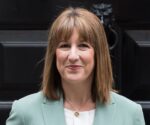Bank of England base rate could plummet to 2.75% | Personal Finance | Finance
The Bank of England is under pressure to slash interest rates six times over the next year in a bid to rescue the faltering economy – with some experts arguing the base rate should fall to 2.75%.
Governor Andrew Bailey and his Monetary Policy Committee (MPC) are expected to make a modest cut from 4.25% to 4% this Thursday.
But a chorus of leading economists is now urging more aggressive action, warning that weak growth, tax hikes and a cooling jobs market could force the Bank into a dramatic U-turn on monetary policy.
Peder Beck-Friis, economist at investment giant Pimco, said: “While inflation has been surprisingly firm, we see good reasons to expect a slowdown.
“Regulatory price hikes, including in employment taxes, have pushed prices up, but wage growth is softening and the labour market is weakening.”
He pointed to a £25billion hit from rising employers’ National Insurance contributions being passed on to consumers – but insisted this would be a short-term shock. “Once this tax shock fades, we expect inflation to ease, as seen in other developed countries,” he added.
“We expect the Bank to accelerate rate cuts later this year, with the policy rate settling near 2.75% next year.”
A rate that low would mark the steepest reversal since 2022 – and bring significant relief to households battling soaring mortgage bills and credit costs.
Michel Nies, of Citi, said: “Very likely tax increases in the autumn Budget” would pile pressure on households and businesses.
He expects cuts in August and November, followed by a flurry of reductions from December that would also drive the base rate down to 2.75%.
He warned: “The divergence between public and private sector employment growth continues to widen with the former still masking a sustained contraction in the latter.” The jobs market has already shed 178,000 employees on payroll over the past year.
Morgan Stanley’s Bruna Skarica joined the call for urgent action, saying: “The build-up of slack in the labour market … can only result in pay and price disinflation over time. The laws of economic gravity can be delayed, but not denied.”
Unemployment has risen to 4.7% – the highest since 2021 – reinforcing the case for further easing.
Despite the warnings, Thursday’s expected cut is still controversial. Inflation remains at 3.6%, well above the Bank’s 2% target – and rising. Some fear cutting too soon could undermine efforts to bring prices under control.
However, central bankers argue that monetary policy takes up to two years to affect inflation. As such, any move this week will largely impact consumer prices by mid-2027, and not the current spike in the cost of living.
Jack Meaning, a former Bank economist now at Barclays, said: “Despite these divergent views on both sides, we think the centre of the committee, and ultimately the decisive bloc, will continue on a gradual and careful quarterly rate cutting path, until it reaches 3.5% in February 2026.”
He expects a rare three-way split in Thursday’s vote – with two members pushing for no change, two for a double cut to 3.75%, and five favouring a drop to 4%.
A similar divide emerged in May, when Swati Dhingra and Alan Taylor voted for a deeper cut. Mr Taylor has long advocated “pre-emptive” action to prevent the “risk of demand stalling” in the economy.









